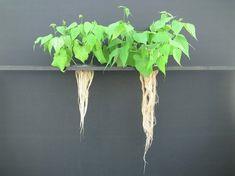
With low water availability becoming an increasing threat to farmers around the world, new research has found potash can help produce quality yields in root crops and potatoes because it helps plants to store water.
The Met Office has just announced that officially Cambridge was a semi-arid zone in 2011 and, with a rise in temperatures of two degrees on average, the West Midlands could also fall into that category.
Drought is a major issue for the potato industry because it uses half of all irrigation water in the UK, K + S Group fertilisers UK & Eire technical manager Jerry McHoul, said. "That's not all for yield, some of that is for scab and reduction, but it's still a major user," he added.
Statistics have shown the economic risk to the UK's £600 million a year potato industry could be £150m to £300m and producers need to look at ways to tackle it, he said.
He said the new discovery that potassium fertilisation raises the water storage potentialof soils could be an important find.
Professor Dr Andreas Gransee, head of department for applied research and agronomy at K+S, explained water storage capability increased because potassium application influenced the creation of mineral bridges in the plant.
These mineral bridges helped build medium-sized pores in the plant that stored water and kept it available to the roots. This was better than large spores that mean water drains away immediately and small pores that do not make the water available to the plant.
The results were most impressive on refined sugar yield. One crop was given sufficient water while another was given 14 per cent less water but fertilised with potassium oxide and magnesium and the plant with less water yielded almost as much, 321 l kg-1 compared with 373 l kg-1.
K+S also found significant improvements in root depth when applying its Korn-Kali potash and magnesium fertiliser with roots growing around 20cm deeper when it was applied to sugar beet.
Professor Dr Andreas Gransee also explained how deficiency of magnesium and potash reduces the export of sugars from leaves to the roots. It means the roots are unable to take up enough nutrients and water under dry conditions but although the deficiency symptoms kick in after two or three days the symptoms aren’t visible in the leaves until around 20 days.



